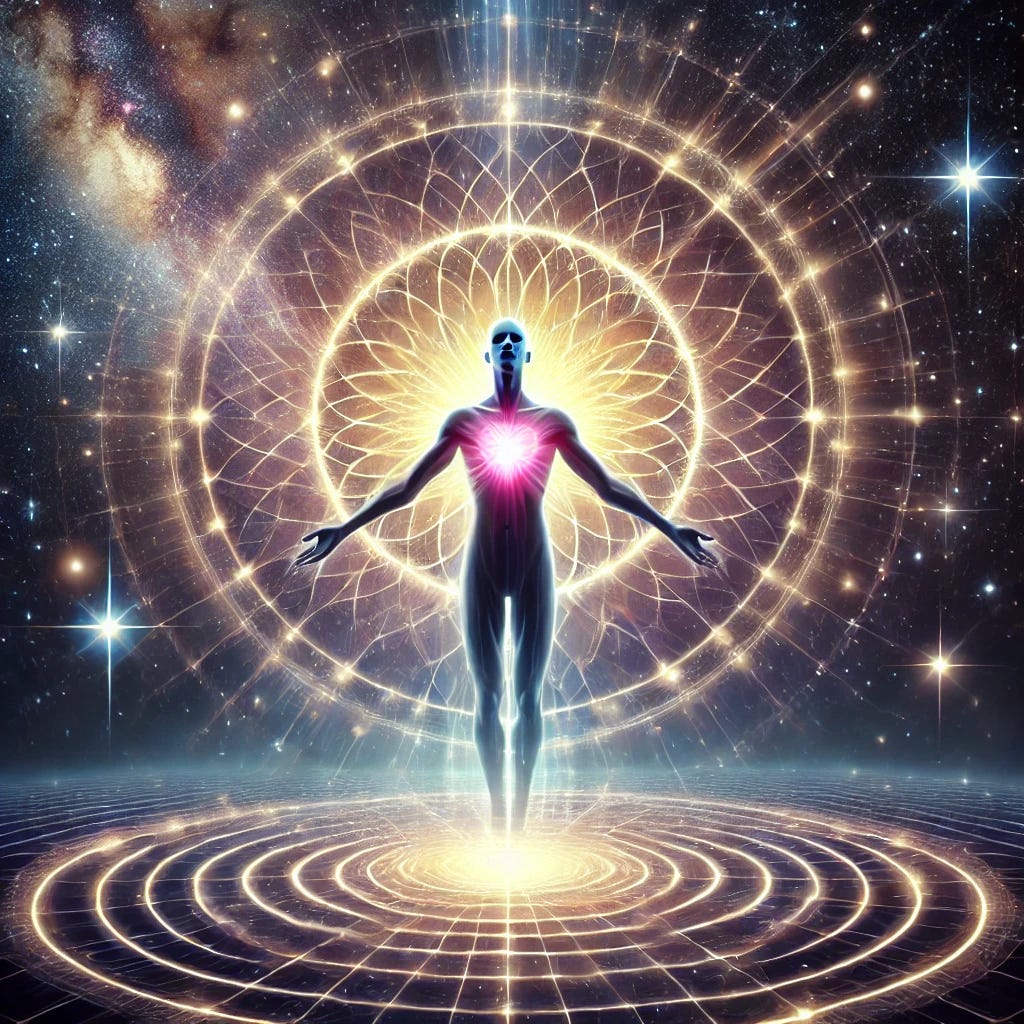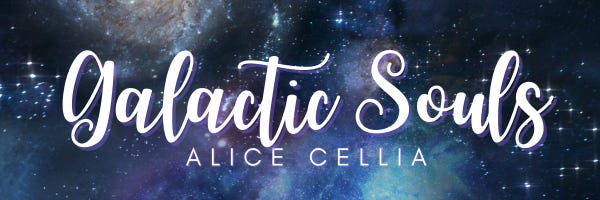The Seven Bodies | Series | Historical Background
Spiritual Evolution and Integration Across Esoteric Traditions
“The great need today is for individuals to know of and accept their own God-Presence, the Ascended Masters, and the Cosmic Beings who are one with It. Such acknowledgment is the open door, making the individual a channel for the Great Ones to pour through Their blessings, to assist mankind, and expand the Light of the world.” -A.D.K. Luk (Alice Schutz), Law of Life, Books I & II
The concept of the "seven bodies" is a profound and multifaceted idea that appears across various spiritual, metaphysical, and esoteric traditions.
These teachings suggest that the human being is not limited to the physical body alone but is composed of multiple layers or bodies, each corresponding to different aspects of consciousness, energy, and spiritual existence.
From the etheric and emotional bodies that govern our vital life force and feelings to the higher mental and causal bodies that connect us with divine wisdom and purpose, these subtle bodies collectively form a complex and interconnected system.
Traditions such as Theosophy, Hinduism, Esoteric Christianity, New Age spirituality, and others explore these bodies, offering insights into the deeper nature of human existence and our path toward spiritual evolution.
Here are some of the teachings that address this concept:
Theosophy:
Theosophy, particularly as presented by Helena Blavatsky and later by Alice Bailey, explores the idea of multiple bodies or planes of existence. The seven bodies typically include the physical, etheric, astral (emotional), mental, causal, buddhic, and atmic bodies.
Hinduism and Vedanta:
In Hindu philosophy, particularly in Vedanta, the concept of koshas (sheaths) is discussed, which can be related to the idea of seven bodies. The five koshas include the physical body (Annamaya Kosha), the vital body (Pranamaya Kosha), the mental body (Manomaya Kosha), the wisdom body (Vijnanamaya Kosha), and the bliss body (Anandamaya Kosha). These can be extended or interpreted to correspond with the seven bodies concept in other traditions.
Esoteric Christianity:
Esoteric Christian teachings, especially those influenced by Gnosticism and Rosicrucianism, often discuss the subtle bodies as part of spiritual development. The seven bodies may be described in relation to the human soul and spirit's evolution towards union with the divine.
New Age Spirituality:
New Age teachings frequently explore the seven bodies as part of the human energy system. These bodies are seen as layers of the aura or energy field, each corresponding to different aspects of consciousness and spiritual development.
Anthroposophy:
Developed by Rudolf Steiner, Anthroposophy discusses the physical, etheric, astral, and "I" (ego) bodies, which can be related to the concept of the seven bodies. Steiner's teachings also delve into higher spiritual bodies that correspond to higher levels of consciousness.
Tibetan Buddhism:
While Tibetan Buddhism doesn't explicitly talk about "seven bodies," it does explore different layers of consciousness and energy bodies, especially in practices like Dzogchen and the concept of the subtle body (Vajra body) in tantric teachings.
Kabbalah:
In Kabbalistic tradition, especially within Lurianic Kabbalah, there is a discussion of different aspects of the soul (Nefesh, Ruach, Neshamah, Chayah, and Yechidah) which can be correlated with the idea of multiple bodies or layers of being.
Sufism:
Sufi mysticism speaks of various "Lataif" or subtle organs of perception, which correspond to different aspects of the self, including spiritual and emotional bodies, which can be seen as analogous to the seven bodies.
Esoteric Astrology:
Esoteric astrology, particularly as taught by Alice Bailey, discusses the seven bodies in relation to the chakras and the planetary and cosmic influences on the different levels of the human being.
These disciplines each offer unique perspectives on the nature of the human being, extending beyond the physical body to encompass spiritual, mental, emotional, and energetic aspects that contribute to the full expression of the self.
The Contributions of Werner Schroeder
The exploration of the seven bodies, as presented in this book, draws deeply from the wisdom of ancient teachings preserved and conveyed by the Ascended Masters.
Werner Schroeder, a committed student of the Ascended Masters' teachings, was instrumental in making the complex concepts surrounding the seven bodies accessible to a wider audience. Schroeder based his work strictly on the messages delivered by the Ascended Masters to their channels, ensuring that his teachings were rooted in authentic, divine wisdom.
Schroeder's teachings emphasize the seven bodies as an interconnected system, each layer playing a crucial role in the individual's spiritual development. He described the three higher bodies— the I AM Presence, the Causal Body, and the Christ Self—as divine and unblemished by the imperfections of the material world. These higher bodies exist in the realms of light and serve as guiding forces in the spiritual journey.
Conversely, the four lower bodies—the etheric, mental, emotional, and physical bodies—are portrayed as the vehicles through which the soul interacts with the physical world. These bodies are also where karmic imprints and energies from past experiences are stored. Schroeder's teachings underscore the importance of purifying these lower bodies, aligning them with the higher bodies to support the soul's ascension.
The Contributions of A.D.K. Luk
A.D.K. Luk, another prominent figure in the Ascended Masters spiritual community, expanded on the understanding of the seven bodies with profound metaphysical insights.
Luk’s work offers a more detailed exploration of the energetic dynamics that sustain the seven bodies and their formation.
Like Schroeder, Luk grounded her teachings strictly on the messages delivered by the Ascended Masters to their channels, including herself, ensuring that her insights were deeply connected to the divine source of wisdom.
One of Luk's key contributions was her explanation of the "Electronic Light Substance," a divine energy originating from the Great Central Sun that permeates all levels of existence. This energy is fundamental to the formation and sustenance of the seven bodies, especially in aligning the lower bodies with the higher ones.
Luk also delved into the significance of the Silver Cord, the lifeline that connects the physical body to the I AM Presence, emphasizing its role in maintaining the flow of divine energy necessary for the sustenance of all seven bodies.
Additionally, Luk described the process by which the seven bodies are formed, beginning with the highest realms and culminating in the physical form. This process illustrates the descent of divine energy into the material world, highlighting the interconnectedness of all levels of existence.
Integrating the Teachings
The teachings of Werner Schroeder and A.D.K. Luk, while distinct, complement each other, providing a holistic understanding of the seven bodies. Schroeder’s systematic approach offers a clear framework for understanding the roles of the seven bodies in spiritual evolution, while Luk’s metaphysical insights provide a deeper understanding of the energies that sustain these bodies. Both teachers ensured that their work remained strictly aligned with the original messages delivered by the Ascended Masters, grounding their teachings in the authentic spiritual tradition.
This book seeks to bridge the wisdom of these two spiritual pioneers, offering a guide that not only educates but also empowers you to engage with your seven bodies in a transformative way.
These teachings are not static doctrines but living wisdom meant to be applied in everyday life. As you go through the chapters ahead, you will find practical applications of these teachings, designed to help you align your seven bodies with your highest purpose.








Your work here is fascinating. Thank you. It delves into things I haven’t heard of or thought of yet. I was wondering. Do you know about the University of Metaphysics/University of Sedona? I am looking into that school. They have a PhD in Comparative Religions and I wondered if that program would discuss some of the things here. Not promoting their programs as I haven’t taken anything from them; just wondering and learning myself. Thank you.